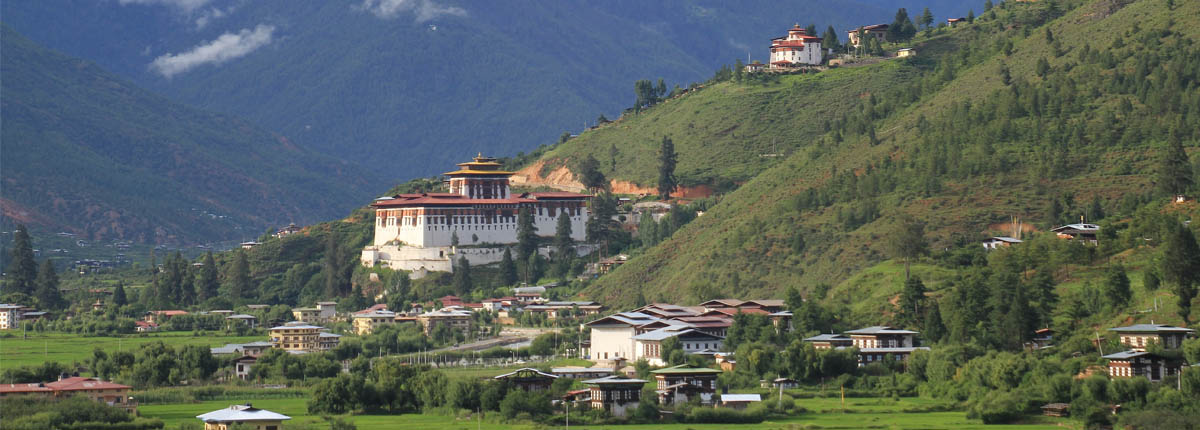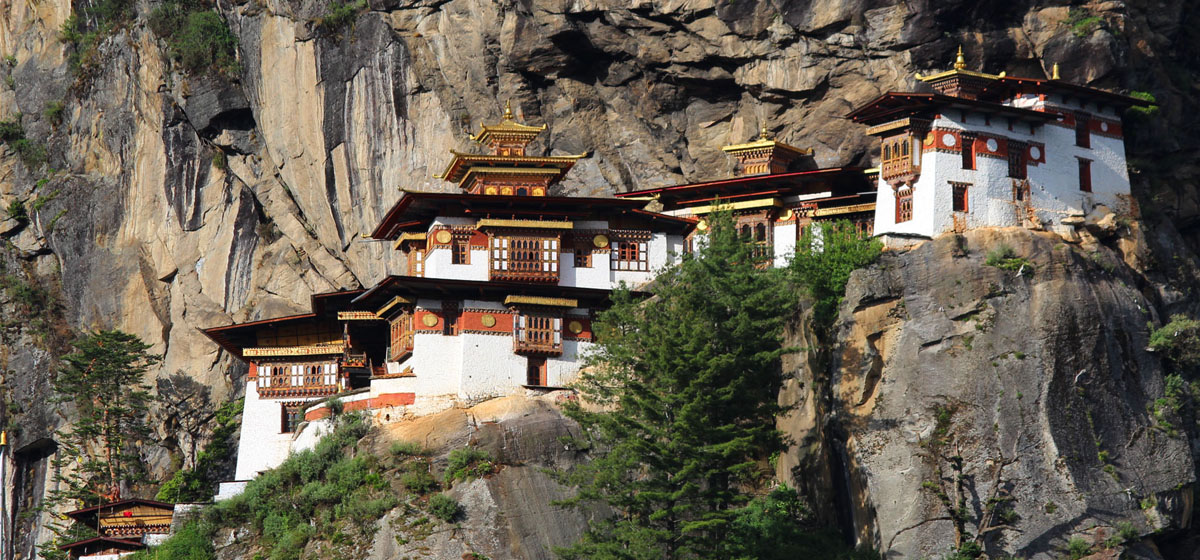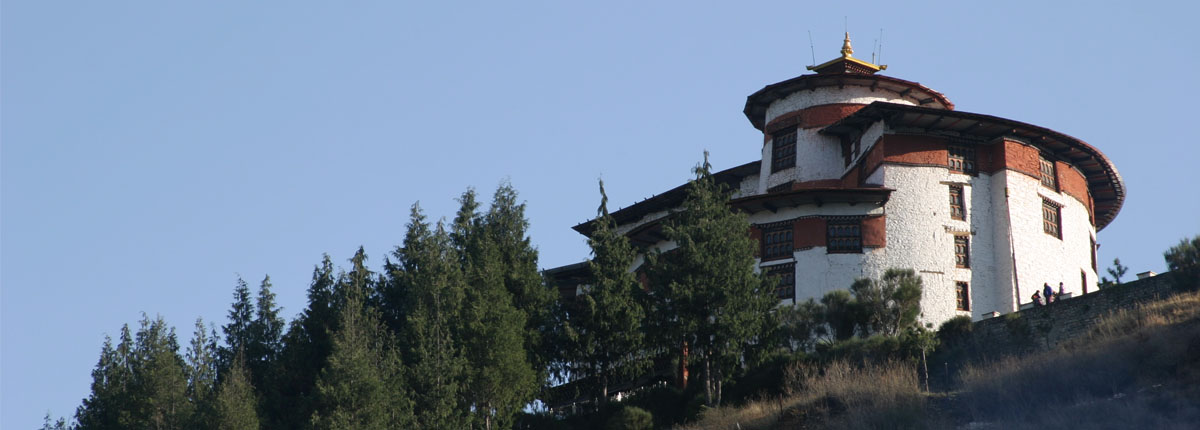Paro (2,200m/7,218ft)
Paro Valley, located in Bhutan, is often referred to as the "Gateway to Bhutan" because it is home to the country’s only international airport, Paro Airport. The valley is known for its picturesque landscapes, historical sites, and cultural significance. One of its most famous landmarks is the Paro Taktsang, also known as the Tiger's Nest Monastery, which is a prominent Himalayan Buddhist sacred site and temple complex.
1. Paro dzong (Rinpung dzong):

Rinpung Dzong, or "Fortress on a Heap of Jewels," is a notable monastery in Paro, Bhutan, showcasing traditional Bhutanese architecture with massive walls, ornate wooden windows, and intricate carvings and murals. Built in 1646 by Zhabdrung Ngawang Namgyal, it serves as both a religious center and the administrative seat of the Paro district.
The dzong hosts the annual Paro Tshechu festival, featuring masked dances and religious rituals. Located on a hill overlooking Paro Valley and the Paro Chhu river, it offers stunning views and is accessed via the Nyamai Zam bridge. Listed on the UNESCO tentative list, Rinpung Dzong is a well-preserved cultural and historical treasure, exemplifying Bhutan's rich heritage.
2. Paro Taktsang (The Tiger's nest monastery)

Paro Taktsang, commonly known as the Tiger's Nest Monastery, is a renowned Buddhist sacred site and temple complex located on a cliffside in the Paro Valley of Bhutan. Perched approximately 3,000 feet above the valley floor, it was originally built in 1692 around the cave where Guru Padmasambhava (Guru Rinpoche) is said to have meditated in the 8th century. The monastery, which is an architectural marvel, is accessible only by a challenging hike, adding to its mystique and spiritual allure. It is one of Bhutan's most iconic landmarks and a significant pilgrimage site, drawing visitors with its stunning views and serene atmosphere.
3. Paro Ta dzong (The national museum in Paro):

Paro Ta Dzong is a historic fortress and watchtower located in Paro, Bhutan. Built in the 17th century, it originally served as a defense structure against invasions. Today, it houses the National Museum of Bhutan, showcasing a rich collection of Bhutanese art, artifacts, religious thangkha paintings, and natural history exhibits. Visitors can enjoy panoramic views of the Paro Valley from its elevated position. The museum provides a deep insight into Bhutan's cultural heritage and is a must-visit for history enthusiasts and those interested in Bhutanese traditions.
4. Tamchog monastery:
Paro Tamchog Monastery, also known as Tamchog Lhakhang, is a picturesque Buddhist temple located in Paro, Bhutan. Founded in the early 15th century by the renowned Tibetan saint Thangtong Gyalpo, the monastery is notable for its unique iron chain bridge, one of the few remaining bridges built by the saint. Perched on a hill overlooking the Paro River, the monastery offers stunning views and a serene atmosphere, making it a significant spiritual site and a popular destination for visitors seeking tranquility and cultural insight.
5. Drugyel Dzong:
Drugyel Dzong is a historic fortress located in Paro district, Bhutan. It was built in 1649 to commemorate Bhutanese victory over Tibetan forces. Situated at the upper end of the Paro Valley, Drugyel Dzong served as a strategic defensive fortress, guarding against Tibetan invasions. Today, its ruins stand as a symbol of Bhutanese history and culture, surrounded by scenic mountain landscapes, making it a popular tourist destination despite being largely in ruins after a fire in the 1950s.
6. Kichu Monastery:
Kichu Monastery, located in Bhutan, is one of the oldest and most sacred temples in the country. It is renowned for its historical significance and spiritual atmosphere, nestled amidst the serene landscapes of the Paro Valley. The monastery is adorned with intricate Bhutanese architecture, including colorful murals and ancient relics, making it a significant pilgrimage site for Buddhists and a cultural treasure for visitors exploring Bhutan's rich heritage.
7. Paro Dungtse Lhakhang:
Dungtse Lhakhang, a unique Buddhist temple built in 1433 by the Tibetan lama Thangtong Gyalpo, is notable for its unusual chorten-like structure, a rarity among Bhutanese religious buildings. The interior houses a wealth of intricate murals and statues depicting various deities and scenes from Buddhist cosmology, making it an important site for both religious practice and art. The temple's design and iconography reflect the deep spiritual significance and historical heritage of Bhutanese Buddhism.
8. Dzongdrakha Lhakhang:
Dzongdrakha Lhakhang is a picturesque Buddhist monastery perched on a cliffside in the Paro Valley of Bhutan. It is renowned for its stunning location and panoramic views of the surrounding mountains and valley. The monastery complex consists of several temples interconnected by steep pathways and adorned with colorful murals depicting Buddhist teachings. Dzongdrakha Lhakhang holds both religious significance and historical charm, attracting visitors seeking both spiritual enrichment and natural beauty.
9. Kila Nunnery:
The Kila Nunnery was founded by Chogyel Norbu in the 9th century, making it one of the oldest nunneries in Bhutan. Surrounding the monastery, you will see several retreat houses.
Just a few years ago, the monastery served as the school for Buddhist studies. However, due to harsh winters and rainy monsoons, the school has since been relocated to Paro town. Now, the monastery is exclusively set aside for Buddhist practitioners who wish to go on retreat. There are approximately 20-25 nuns taking care of the monastery and attending to the practitioners.
10. Chele La Pass (3,988 meters or 13,084 feet):
Chele La Pass is a high mountain pass located in Bhutan, known for its breathtaking scenic views of the Himalayas. Situated at an altitude of about 3,988 meters (13,084 feet), it offers panoramic vistas of snow-capped peaks, lush valleys, and pristine alpine forests. The pass is often enveloped in mist and clouds, adding to its mystique and beauty. It serves as a popular tourist destination and a route for trekkers and adventurers exploring the natural splendor of Bhutan.
11. Neyphug Monastery:
Neyphug Monastery, located in Bhutan, is renowned for its tranquil setting amidst lush forests and rugged mountains. It serves as a spiritual retreat and Buddhist learning center, offering a serene environment for meditation and contemplation. The monastery's traditional architecture, adorned with intricate murals and statues, reflects Bhutanese cultural heritage. Neyphug Monastery is a sacred site where monks and visitors alike seek spiritual enlightenment and inner peace.